Subtotal: £81.29
MALAWI CICHLID MIX RANDOMLEY SELECTED SIZE 3-4 Cm, Stunning Cichlid Species That Thrive with Proper Care, Ideal for Aquarists Seeking Vibrant Tank Mates
£6.99 Original price was: £6.99.£5.81Current price is: £5.81.
Welcome these beautiful Malawi Cichlids into your aquarium and enjoy their vibrant colors and unique patterns. These active Lake Tanganyika cichlids are perfect for creating stunning aquatic displays and are ideal for intermediate aquarists looking for lively community members.
995 in stock
Species Introduction
The Malawi Cichlid Mix is a vibrant collection of cichlid fish hailing from the stunning waters of Lake Malawi, one of the largest and most biodiverse lakes in Africa. These beautiful aquatic companions are known for their striking colors and unique behaviors, making them a popular choice among aquarium enthusiasts. While specific species information may vary, the Malawi cichlids in this mix typically range in size from 3 to 4 cm, providing an ideal size for both beginner and intermediate aquarists. Their natural habitat consists of rocky substrates and sandy bottoms, where they thrive in various environmental conditions, showcasing their adaptability. As part of the Cichlidae family, these fish exhibit territorial behaviors, which adds an intriguing dynamic to their social interactions. Welcome these beautiful creatures into your aquarium, and you will be rewarded with a lively display of colors and behaviors that reflect their natural beauty.
Care Requirements Dashboard
Essential Care Guide for Your Malawi Cichlid Mix
| Optimal Living Conditions | |
|---|---|
| Water Temperature | 24-27°C (75-81°F) |
| pH Level | 6.5-7.5 |
| Water Hardness | 4-12 dKH |
| Minimum Tank Size | 80L (20 gal) |
| Salinity | Freshwater |
| Care Level | Beginner Friendly |
Natural Behavior & Temperament
Malawi cichlids are known for their dynamic and engaging behaviors. In their natural habitat, they exhibit a range of swimming patterns, often darting between rocks and hiding spots, showcasing their natural instincts. These fish are generally territorial, especially males, which can lead to displays of aggression during breeding seasons or when establishing dominance. However, they can also form social groups, particularly when kept in larger aquariums with plenty of hiding spots and territories. Understanding their social structure is essential for creating a harmonious community tank. Observing their interactions can be fascinating, as they communicate through body language and color changes, adding an enriching experience to your aquarium.
Tank Setup Guide
Creating the ideal environment for your Malawi cichlids involves replicating their natural habitat as closely as possible. Start with a spacious aquarium of at least 100 liters, as these fish require ample swimming space. Use a sandy substrate to mimic the lakebed, and incorporate rocks and caves to provide hiding spots and territories. This setup not only enhances their comfort but also reduces stress, promoting healthy behaviors. Be mindful of the layout, ensuring there are plenty of open swimming areas while also providing secluded spots for shy individuals. Aquascaping can be a rewarding experience, allowing you to create a visually appealing and functional environment for your vibrant fish friends.
Water Quality Management
Maintaining optimal water quality is crucial for the health of your Malawi cichlids. Regular testing for pH, temperature, and hardness is essential to ensure a stable environment. Aim for a pH level between 7.5 and 8.5, with a water temperature of 24-28°C (75-82°F). The hardness should be maintained between 10-20 dGH, reflecting the conditions of Lake Malawi. Regular water changes, approximately 20-30% weekly, will help remove waste and toxins, keeping the water clean and clear. Additionally, investing in a quality filtration system will aid in maintaining water clarity and quality, ultimately contributing to the well-being of your fish.
Feeding & Nutrition
Important feeding note
Feed high-quality cichlid pellets, flakes, and occasional frozen or live food.
Feeding your Malawi cichlids a varied diet is essential for their health and vitality. High-quality cichlid pellets or flakes should form the basis of their diet, supplemented with occasional offerings of frozen or live foods such as brine shrimp, daphnia, or bloodworms. Feed them once or twice a day, ensuring that they consume the food within a few minutes to prevent overfeeding and water quality issues. A well-balanced diet will enhance their coloration and overall health, allowing them to thrive in your aquarium.
Compatibility Guide
When selecting tank mates for your Malawi cichlids, it is essential to choose species that can coexist harmoniously. Generally, Malawi cichlids are best kept with other African cichlids or robust fish that can handle their territorial nature. Avoid smaller or more docile species, as they may become targets for aggression. Suitable tank mates include other cichlids from Lake Malawi, such as Mbunas or Peacocks, as well as larger tetras or catfish that can withstand the cichlids’ behavior. Always monitor interactions closely, especially during the initial introduction phase, to ensure a peaceful community tank.
Health & Wellness
Maintaining the health of your Malawi cichlids involves regular observation and proactive care. Common health issues include ich, fin rot, and swim bladder disease. To prevent these conditions, ensure optimal water quality, provide a balanced diet, and avoid overcrowding in the tank. Regularly check for signs of distress, such as abnormal swimming patterns, loss of appetite, or visible lesions. If health issues arise, prompt treatment is essential. Quarantine any new arrivals before introducing them to the main tank to prevent the spread of diseases. By being vigilant and proactive, you can ensure a thriving and healthy aquarium environment for your beautiful fish friends.
Breeding Information
Breeding Malawi cichlids can be a rewarding experience, as these fish exhibit fascinating reproductive behaviors. They are mouthbrooders, meaning females carry the fertilized eggs in their mouths until they hatch. To encourage breeding, provide a separate breeding tank with suitable hiding spots and a stable environment. Males will often display vibrant colors and engage in courtship behaviors to attract females. Once the female lays her eggs, she will collect them in her mouth for protection. After about two to three weeks, the fry will be ready to swim freely. During this period, it is crucial to provide appropriate food for the fry, such as finely crushed flakes or specialized fry food, to support their growth and development.
Acclimation Process
Introducing your Malawi cichlids to their new home requires careful acclimation to minimize stress. Start by floating the sealed bag containing the fish in the aquarium for about 15-20 minutes to equalize the temperature. Then, gradually introduce small amounts of tank water into the bag over the next hour, allowing the fish to adjust to the water parameters. Once acclimated, gently release the fish into the aquarium, avoiding the introduction of bag water to prevent contamination. Monitor their behavior closely during the first few days, ensuring they adapt well to their new environment.
Long-term Care
Caring for your Malawi cichlids over the long term involves regular maintenance and attention to their needs. As they grow, be prepared to upgrade their tank size if necessary, as these fish can become territorial and require ample space. Regular water changes, feeding schedules, and health monitoring are essential to ensure their well-being. Additionally, consider rotating decorations or rearranging the tank layout to prevent boredom and stimulate natural behaviors. With proper care, your Malawi cichlids can thrive for many years, providing joy and beauty to your aquarium.
Natural Habitat Recreation
Recreating the natural habitat of Malawi cichlids in your aquarium can enhance their comfort and well-being. Focus on using natural materials such as rocks, caves, and driftwood to mimic the rocky shores and sandy bottoms of Lake Malawi. This setup not only provides hiding spots and territories but also encourages natural behaviors, such as foraging and exploring. Consider incorporating live plants that can thrive in the conditions suitable for cichlids, as they can improve water quality and provide additional cover. By creating a biotope that reflects their natural environment, you will not only enhance the aesthetic appeal of your aquarium but also promote the health and happiness of your fish friends.
Seasonal Care Adjustments
Seasonal changes can impact the care of your Malawi cichlids, particularly in terms of temperature and lighting. During warmer months, ensure that the water temperature remains stable, using fans or chillers if necessary to prevent overheating. Conversely, during cooler months, monitor the temperature closely and consider using heaters to maintain the desired range. Additionally, adjust lighting schedules to mimic natural day/night cycles, promoting healthy behaviors and reducing stress. Being attentive to these seasonal adjustments will help ensure a thriving environment for your vibrant aquatic companions.
Expert Tips
To enhance your experience with Malawi cichlids, consider implementing some expert tips. First, maintain a diverse diet to promote health and coloration. Second, provide plenty of hiding spots to reduce aggression and stress. Third, regularly monitor water parameters and perform routine maintenance to keep the environment stable. Lastly, observe their behavior closely to understand their social dynamics and ensure compatibility with tank mates. By following these tips, you can create a harmonious and vibrant aquarium that showcases the beauty of these incredible fish.
Troubleshooting
Encountering issues with your Malawi cichlids can be concerning, but being proactive can help resolve many common problems. If you notice signs of stress or illness, first check water quality parameters, as poor conditions can lead to health issues. If aggression arises, consider rearranging tank decorations to disrupt established territories. For feeding issues, ensure a varied diet and monitor feeding habits closely. If you encounter persistent problems, consult with an aquarium professional or veterinarian for tailored advice. By being vigilant and responsive, you can maintain a healthy and thriving aquarium environment for your Malawi cichlids.
Scientific Background
The scientific classification of Malawi cichlids is complex, as they belong to a diverse group of species within the Cichlidae family. These fish have evolved in the unique environment of Lake Malawi, which hosts over 1,000 species of cichlids, each adapted to specific niches within the lake. Research into their behavior, breeding, and conservation has provided valuable insights into their ecological importance and the need for habitat preservation. Understanding their scientific background can enhance your appreciation for these remarkable fish and the delicate ecosystems they inhabit.
Advanced Care Techniques
For experienced aquarists looking to take their care of Malawi cichlids to the next level, consider implementing advanced techniques. Regularly rotating tank decorations can stimulate natural behaviors and reduce territorial disputes. Additionally, consider breeding specialized strains or hybrids to enhance coloration and traits. Advanced water quality management techniques, such as using reverse osmosis systems, can help achieve optimal parameters. Lastly, participating in local cichlid clubs or online forums can provide valuable resources and connections to fellow enthusiasts. By embracing these advanced care techniques, you can create an exceptional environment for your Malawi cichlids, showcasing their beauty and behaviors.
Frequently Asked Questions
Q: What tank size is required for Malawi Cichlids?
Malawi Cichlids thrive in spacious environments, and it is recommended to provide at least a 200-litre (approximately 52 gallons) tank. This size allows ample swimming space and reduces territorial disputes, which are common among cichlids. Additionally, larger tanks help maintain stable water parameters, crucial for these fish’s health. A well-planned aquascape with plenty of hiding spots, such as caves and rock formations, mimics their natural habitat and promotes a stress-free environment. Remember, the more fish you introduce, the larger the tank should be, as overcrowding can lead to aggression and health issues.
✓ Expert Tip
Consider adding a sand substrate, as it is more natural for Malawi Cichlids and helps prevent injuries.
Q: What water parameters do Malawi Cichlids require?
Malawi Cichlids prefer alkaline water with a pH between 7.8 and 8.6, which mimics their natural habitat in East African lakes. The water hardness should be moderately high, around 10-20 dGH. Maintaining stable temperatures is essential; aim for a range of 24-28°C (75-82°F). Regular water changes of 15-20% weekly help maintain water quality and remove toxins. Investing in a reliable water testing kit will assist in monitoring these parameters closely, ensuring your cichlids thrive in optimal conditions.
✓ Expert Tip
Utilise a quality aquarium heater and filter to maintain stable temperatures and water flow.
Q: How often should I feed Malawi Cichlids?
Feeding Malawi Cichlids should occur 2-3 times per day, with amounts they can consume within 2-3 minutes. A varied diet is crucial for their health, including high-quality pellets, flakes, and frozen or live foods like brine shrimp and bloodworms. Overfeeding can lead to water quality issues and health problems, so monitoring their intake is vital. Additionally, consider providing vegetable matter such as spirulina, as it aids in digestion and promotes vibrant colours.
✓ Expert Tip
Introduce a feeding schedule to establish routine, which helps reduce stress in your cichlids.
Q: What are the best tank mates for Malawi Cichlids?
Choosing compatible tank mates for Malawi Cichlids is crucial, as they can be territorial. Suitable companions include other African cichlids, such as those from the Tanganyika and Victoria lakes, provided they share similar water requirements. Avoid smaller fish that may become targets for aggression. Species like Synodontis catfish or larger barbs can also coexist well. Always introduce new fish gradually and observe their interactions to ensure a peaceful environment.
✓ Expert Tip
Add new arrivals after dark to reduce territorial disputes during the day.
Q: How do I properly acclimatise Malawi Cichlids to my aquarium?
Acclimatisation is vital for the health of newly introduced Malawi Cichlids. Begin by floating the sealed bag in your aquarium for approximately 15-20 minutes to equalise the temperature. Next, gradually introduce small amounts of aquarium water into the bag over the next hour, allowing the fish to adjust to the water parameters. After this period, gently release the fish into the tank without adding the bag water. This method minimises stress and enhances the chances of a successful transition.
✓ Expert Tip
Ensure your aquarium is well-established with stable parameters before introducing new fish.
Q: What are the signs of healthy Malawi Cichlids?
Healthy Malawi Cichlids exhibit vibrant colours and active swimming behaviour. They should show interest in food and maintain a good appetite. Observe for any signs of distress, such as clamped fins, lethargy, or abnormal swimming patterns, which may indicate health issues. Regularly check for external parasites or lesions. Maintaining optimal water conditions and a balanced diet will contribute significantly to their health and longevity.
✓ Expert Tip
Regular observation and water testing are essential for early detection of issues.
Q: How do I successfully breed Malawi Cichlids?
Breeding Malawi Cichlids can be a rewarding experience. To encourage breeding, provide a suitable environment with plenty of hiding places and flat surfaces for egg laying. Maintain water temperature around 26-28°C (79-82°F) and ensure good water quality. A ratio of one male to two or three females is recommended to reduce aggression. Once the female lays eggs in her mouth, she will incubate them for about three weeks before releasing the fry. During this period, it is essential to ensure the tank is peaceful and well-maintained.
✓ Expert Tip
Consider using a breeding box for the fry to protect them from adult fish.
Q: What temperature should I maintain for Malawi Cichlids?
Maintaining a consistent water temperature between 24-28°C (75-82°F) is crucial for the health of Malawi Cichlids. Sudden fluctuations can stress these fish, leading to health issues. A quality aquarium heater with a reliable thermometer will help maintain stable temperatures. Regular monitoring is essential, especially during seasonal changes, to ensure the environment remains optimal. Keeping the temperature within this range will promote active behaviour and enhance their overall wellbeing.
✓ Expert Tip
Avoid placing the aquarium in direct sunlight to prevent overheating.
Q: How long do Malawi Cichlids typically live in captivity?
With proper care, Malawi Cichlids can live for 8-12 years in captivity. Factors such as water quality, diet, and tank conditions significantly influence their lifespan. Regular maintenance and monitoring of water parameters will help prevent diseases that could shorten their lives. Providing a well-balanced diet with essential nutrients also plays a crucial role in their longevity. Ensuring a stress-free environment with compatible tank mates will further enhance their wellbeing.
✓ Expert Tip
Keep a log of their health and any changes in behaviour to identify potential issues early.
Q: What type of substrate is most suitable for Malawi Cichlids?
Malawi Cichlids thrive best in a sandy substrate, which mimics their natural habitat and allows for natural behaviours like digging and foraging. A fine, smooth sand is preferable to prevent injury to their sensitive mouths. When setting up your tank, ensure the substrate layer is at least 2-3 inches deep to provide adequate space for burrowing. Additionally, incorporating rocks and caves will enhance their environment, offering hiding spots and territorial boundaries.
✓ Expert Tip
Rinse the substrate thoroughly before adding it to the tank to remove dust and particles.
Q: What behavioural patterns should I expect from Malawi Cichlids?
Malawi Cichlids are known for their vibrant behaviour and territorial nature. They often establish territories within the tank, particularly males, which may lead to displays of aggression towards each other or other species. Observing their interactions can be fascinating, as they engage in courtship rituals and establish hierarchies. Regular swimming patterns, foraging behaviour, and occasional hiding when feeling threatened are common. Providing ample hiding spots will help reduce stress and promote natural behaviours.
✓ Expert Tip
Observe their behaviour closely to identify any signs of stress or aggression.
Q: How can I prevent common diseases in Malawi Cichlids?
Preventing diseases in Malawi Cichlids involves maintaining optimal water quality, a balanced diet, and a stress-free environment. Regular water changes and testing are essential for keeping parameters stable. Quarantine new arrivals for 2-4 weeks to prevent introducing pathogens. Feeding a varied diet rich in vitamins and minerals boosts their immune systems, making them less susceptible to illness. Additionally, observing for signs of stress or illness promptly allows for early intervention, preventing more severe outbreaks.
✓ Expert Tip
Maintain a consistent feeding schedule and avoid overfeeding to reduce waste and improve water quality.
Q: What lighting conditions do Malawi Cichlids prefer?
Malawi Cichlids prefer moderate lighting that mimics their natural habitat. A balance of light and shade is ideal, as this helps them feel secure and encourages natural behaviours. LED lights are a popular choice due to their energy efficiency and longevity. Providing shaded areas with decorations such as rocks and plants can help create a more natural environment. Aim for a photoperiod of 10-12 hours a day, adjusting based on the needs of your tank’s inhabitants and plant life.
✓ Expert Tip
Consider using a timer to maintain a consistent lighting schedule.
Q: How do I recognise stress in Malawi Cichlids?
Recognising stress in Malawi Cichlids is crucial for their wellbeing. Signs include erratic swimming, hiding excessively, clamped fins, and loss of appetite. Their colours may dull, and they may become more aggressive or withdrawn. Monitoring their behaviour and environment is key; changes in tank mates, water quality, or feeding schedules can trigger stress. Providing a stable environment with adequate hiding spots and compatible companions can significantly reduce stress levels.
✓ Expert Tip
Regularly observe your fish and maintain consistent water parameters to minimise stress.
Q: What natural habitat conditions should I replicate for Malawi Cichlids?
To create a suitable environment for Malawi Cichlids, replicate their natural habitat found in the rocky shores of African lakes. Use a sandy substrate and include plenty of rocks and caves for hiding and breeding. Maintain water parameters with a pH of 7.8-8.6 and a temperature of 24-28°C (75-82°F). Additionally, ensure good water circulation to mimic their natural habitat. Providing a well-planted area can also enhance their environment, but be cautious as many cichlids may uproot plants.
✓ Expert Tip
Utilise natural decorations to create visual barriers, reducing aggression amongst tank mates.



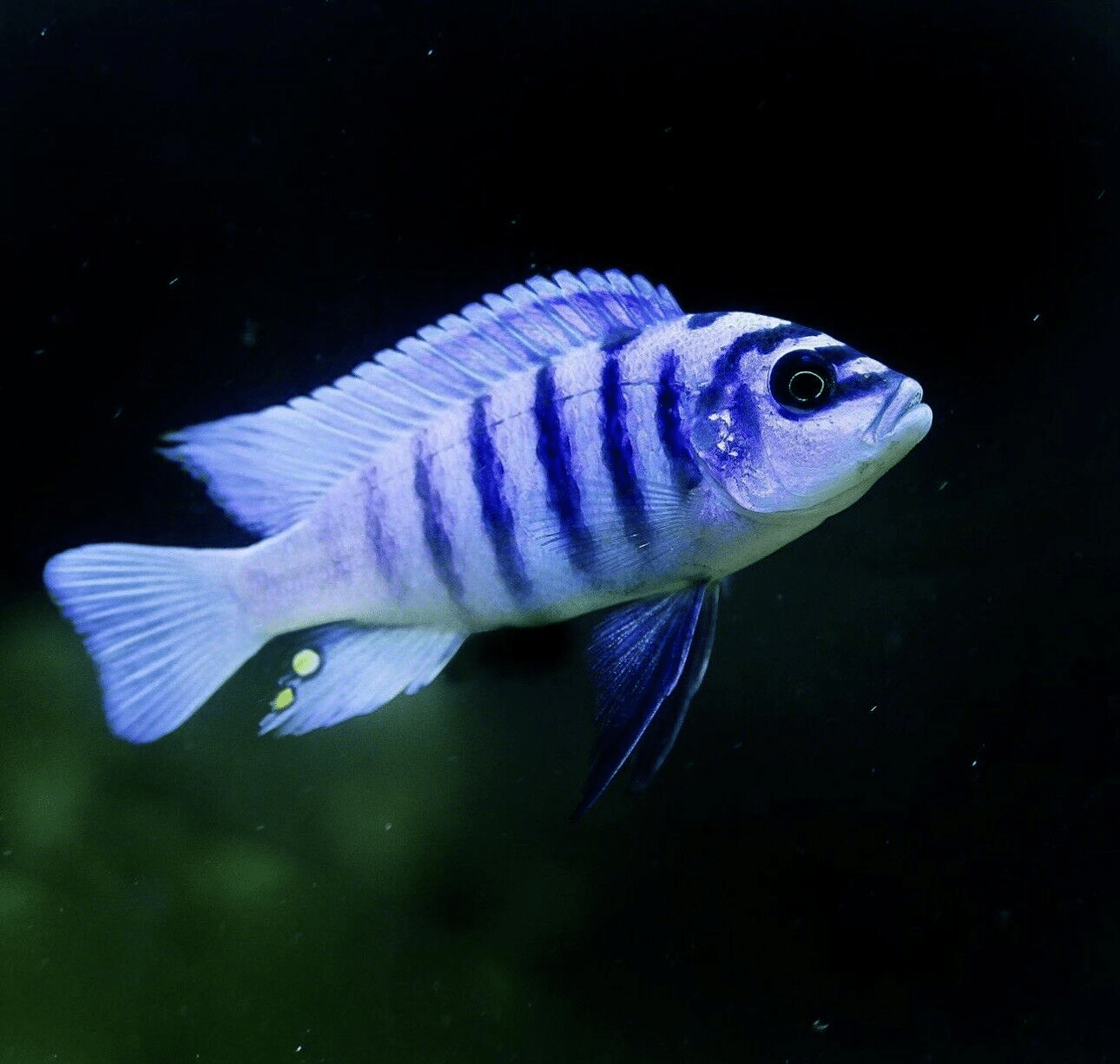

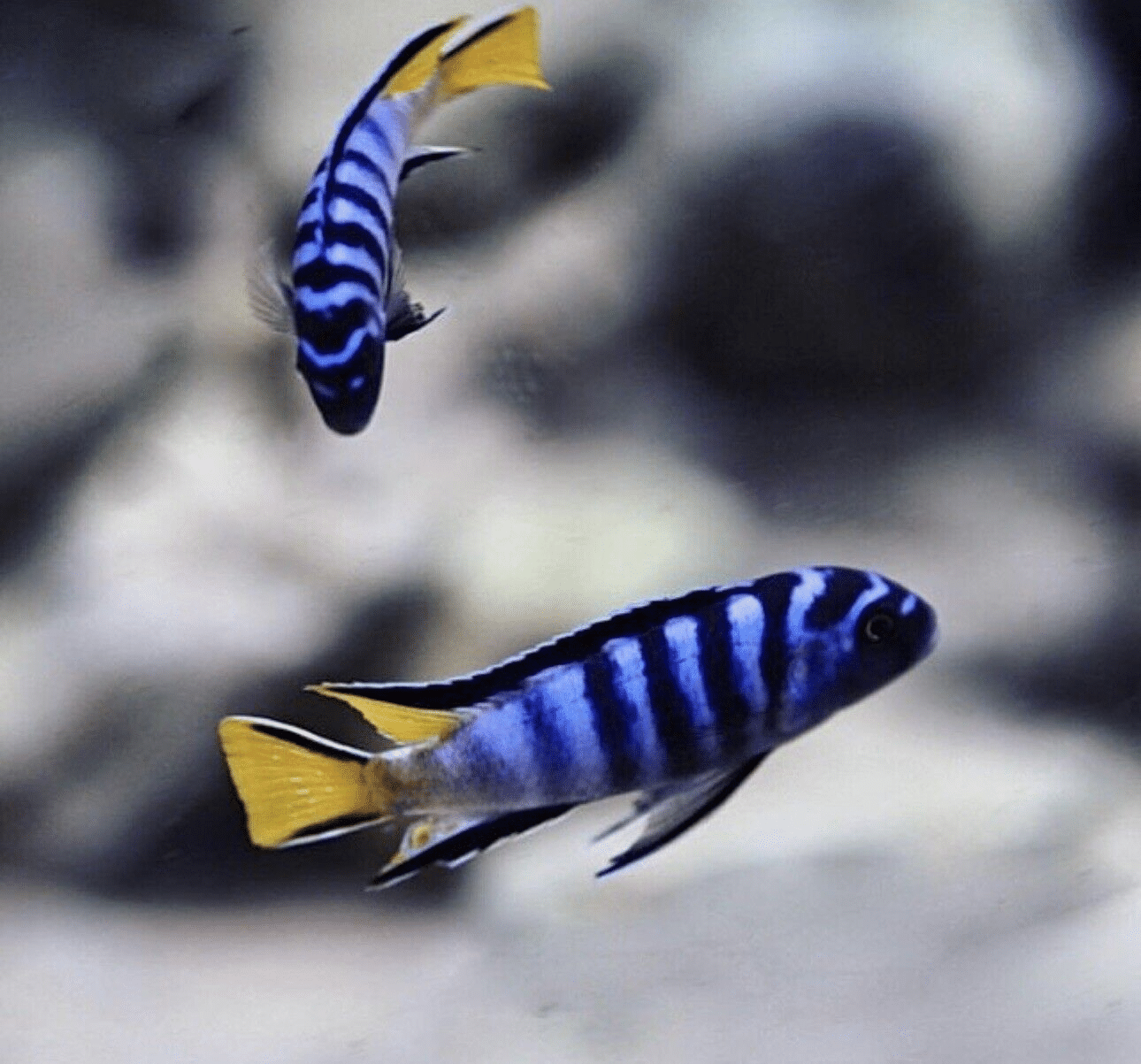
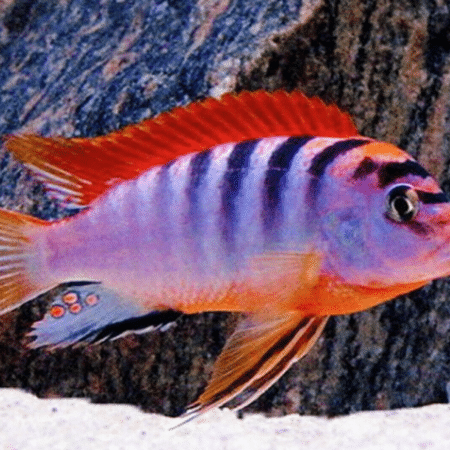
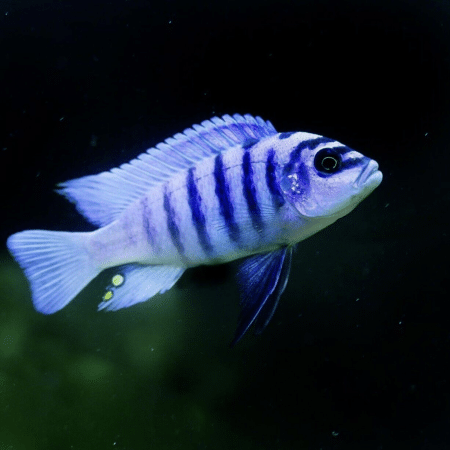

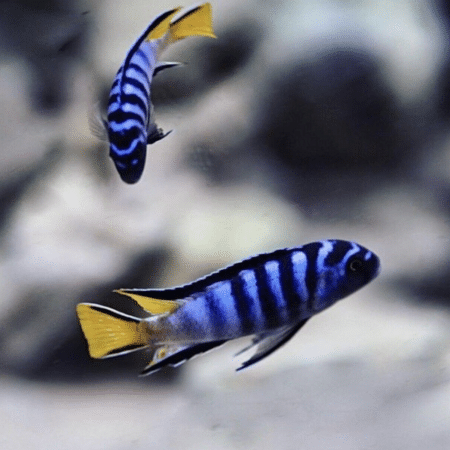
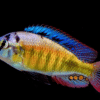
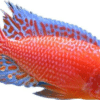










Mike Thompson (verified owner) –
As an experienced hobbyist, I couldn’t be happier with the Malawi Cichlid Mix I recently purchased. These little beauties, sized 3-4 cm, arrived healthy and vibrant, showcasing their stunning colors right from the box. After just a week in my tank, they adjusted beautifully to their new home! I’ve been particularly impressed with their lively personalities and how well they interact with each other.
Compared to other suppliers I’ve tried, this mix stands out for the health and liveliness of the fish. I’ve seen them thrive on high-quality fish food, which seems to keep their energy levels up and colors bright.
One minor concern was the initial adjustment period; a couple were a bit shy at first. However, I ensured my tank had plenty of hiding spots, and soon, they were all swimming confidently! This mix is perfect for both seasoned aquarists and those new to cichlids. If you love vibrant, active fish that improve your aquarium’s dynamics, I highly recommend trying these Malawi cichlids. They’ve truly brightened my setup, and I’m excited to see them grow!